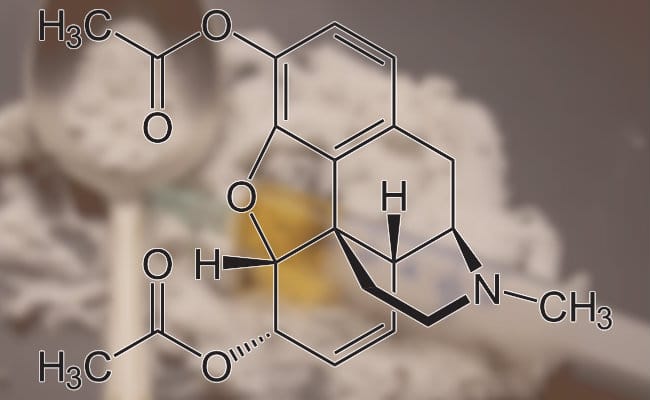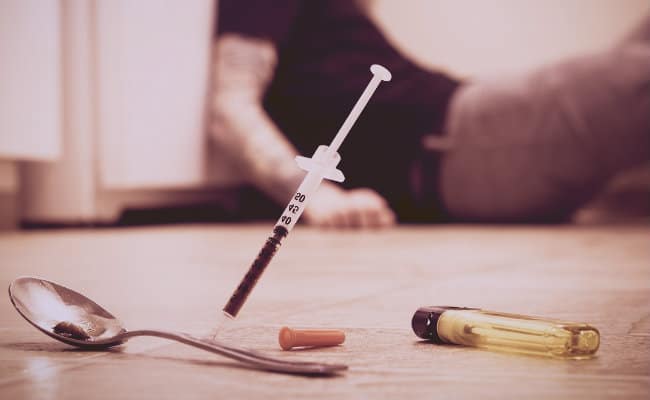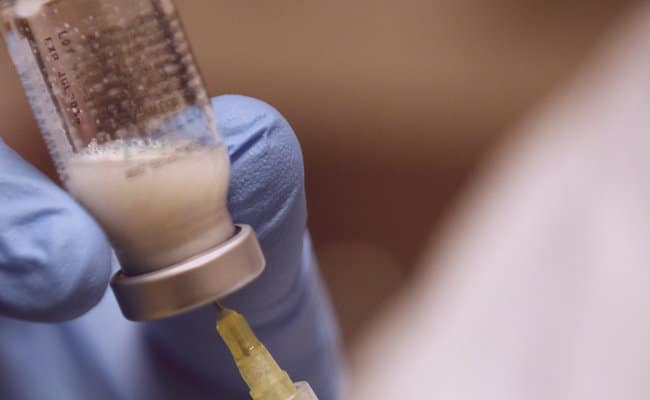Among the different analgesic opioids existing, we can find heroin; which also has properties that allow to suppress the cough and even avoid stomach problems such as diarrhea. However, its medical use is less than recreational, due to the powerful effects it produces; reason for which we have prepared this entry with all the information about it.
Know what heroin is and its characteristics
As we mentioned, it is an opioid with analgesic effects. It is a derivative of morphine, which is made from the plant from which opium is brought. It is much more powerful than morphine, and the effects tend to start more quickly.
- The illegal is known as a white powder, which is combined with certain adulterants.
- This is consumed intravenously or orally by smoking.
- It is considered a drug central nervous system depressant.
- It is among the substances that generate great physical and psychological dependence with the greatest speed; which places it among the drugs with the highest degree of addiction and that generates great damage compared to others.

It was discovered by Charles Romley Alder, who synthesized it after isolating it with a process called "acetylation" of morphine hydrochloride. Its etymology is due to the Bayer company, a pharmaceutical company located in Germany that commercialized the substance diaceltimorphine under the name "heroin."
The same company was in charge of marketing the product, which was thought to be a "non-active" version of morphine. At that time, morphine was used recreationally, so this new substance was the ideal option for these cases. However, the opposite happened and many more people began to depend on the substance, quickly surpassing its predecessor.
What are the effects of heroin?
Among the effects produced by the consumption of the substance we can find apathy, miosis, drowsiness, decreased respiratory, motor activity and tension, nausea or vomiting (usually in the first consumptions) and abstinence. This also produces effects on the central and peripheral nervous system, which are:
Effects on the central nervous system
- Inhibition of vomiting.
- Suppression of cough.
- The pupil decreases in size.
- Sedation and analgesic effect.
- Hallucinations
- Body temperature is lowered.

Effects on the peripheral nervous system
- The first few times it can give effects such as vomiting or nausea; but if the same dose is maintained when consuming on other occasions, this effect disappears.
- The sphincters increase their function, as do the smooth muscles (see the bronchi, for example).
- Progressive development of constipation.
- Dryness of the skin and mucous membranes.
- Allergic reactions.
- Blurry vision.
Negative effects of abusive use
It also produces several negative effects when abused, which can lead to complications and serious health problems; due to the physiological alterations produced by it and the added adulterants.
- One of the most common dangers is overdose, since according to a study carried out in the United States, approximately 55% of addiction patients have suffered at least one overdose.
- The drug can lead to the development of epilepsy or similar problems and psychosis or mental disorders.
- The continuous alteration of the central nervous system can produce diseases in the liver, circulation, among others.
- If the person is allergic to compounds such as angioedema and anaphylaxis, a complication may occur that would endanger the life of the person doing the consumption. However, few are the cases found.
Finally, this type of recreational and illegal drugs that are consumed through intravenous injections, are much more likely to infect the user with diseases such as AIDS or hepatitis; in addition to promoting the development of different types of infections.
What are the forms of consumption?
It is used by laboratories, doctors and individuals with different reasons or motives. The former are in charge of use diacetylmorphine to synthesize other pain relieving compounds; while the latter are conducting studies and the third consume it recreationally. These last two are the most interesting uses, which we will explain below:
Medical use of the drug
It is used by several doctors to carry out studies regarding the difference between traditional morphine and this substance; where, for example, in Germany an investigation is being carried out to determine if it is possible to treat addicts to the substance and other opioids with pure heroin without the adulterants that are usually found in the illegal drug, which in most cases produce hurt.

Recreational and abusive use
The main problem of heroin is that it is has a high probability rate of becoming addicted to the substance; which means that even if an individual experiments with the drug recreationally, the chances that they will use it again are quite high.
The drug can be consumed through different forms of administration, such as sublingual, inhaled, smoked, oral, cutaneous, intravenous and rectal or vaginal. This large number of options are divided into several methods, such as:
- The substance can be chewed (sublingual).
- It is also possible to consume it in an inhaled form, that is, the product is inhaled directly.
- Orally, it is consumed pure or combined with alcohol, which can reduce some of its more serious effects.
- It can be smoked, either with some other complement or alone, in which case a paper such as aluminum is usually used.
- There are suppositories for vaginal or rectal consumption.
- Consumption through the skin consists of rubbing the substance with force, which usually leaves scars characteristic of many patients.
- Finally, the main route of consumption which is through an intravenous injection. For this method it is necessary to boil the substance with water and it is possible to inject it into any vein, although it is usually in the extremities.
What are the doses used?
The dose that is usually consumed is approximately 7 milligrams, depending on the degree of sensitivity that the subject has towards opiates. In case of abusing consumption for a good period of time, the individual may need doses that exceed 30 milligrams.
Due to the tolerance that dependence on the drug can generate, the dose can be increased considerably as time passes and a complication or death due to a disease more easily.
Treatment for heroin addicted patients

Heroin is considered a hard drug, as it has the highest score on the dependency, addiction and tolerance scale. Which means that the majority of patients who consume it become physically and psychologically dependent; as well as they are becoming tolerant to it and need to consume a higher dose.
However, although it may seem complicated, it is possible to carry out treatments so that a patient can stop the drug and continue his life normally. Although for this, the individual must be aware of the damage produced by it and must agree to abandon its consumption.
Among the most prominent treatments to curb consumption is that of detox, methadone and buprenorphine or other similar medications.
- The detox program It is similar to that of other drugs, where they allow the patient to stop consumption and treat the symptoms produced by the withdrawal syndrome. This is normally more effective when the individual is interned for three months to half a year.
- For its part, la methadone it is also a treatment for heroin in which the substance is used to treat addiction; being one of the oldest programs. Your goal is to take the medication by mouth and prevent withdrawal symptoms from occurring. This treatment is preferable to combine with behavioral therapies.
- Lastly, buprenorphine and assorted medications can also be helpful. This produces effects similar to that of opiates, but of less intensity; which is a way to prevent the effects of withdrawal. In addition, other medications such as naltrexone and naloxone can also be used, since they block the effects produced by most opiates.
What is withdrawal syndrome like?
Like the withdrawal syndrome from other opiatesThese are usually quite strong and can even be quite serious; This is why addicted or dependent patients are admitted to be able to treat them more effectively and, in turn, take care of them.
- After the last consumption, individuals feel the need or desire to consume, which produces effects such as anxiety or desperate search for the substance.
- In a range of eight hours to fifteen hours, symptoms such as sweating, yawning and tearing occur.
- From fifteen hours to a day, the effects can be more serious, since the patient will feel waves of different temperatures (hot or cold), anorexia, mood swings, mydriasis and even muscle cramps.
- After passing the first day, symptoms such as lack of sleep, pain in the abdominal area, vomiting, nausea, stomach problems, and difficulty in performing motor tasks are experienced.
We hope that the entry about this medical and recreational drug with devastating effects and high-degree dependence, tolerance and addiction, has been to your liking. In case you have any questions or contributions, do not forget to comment in the box located below.